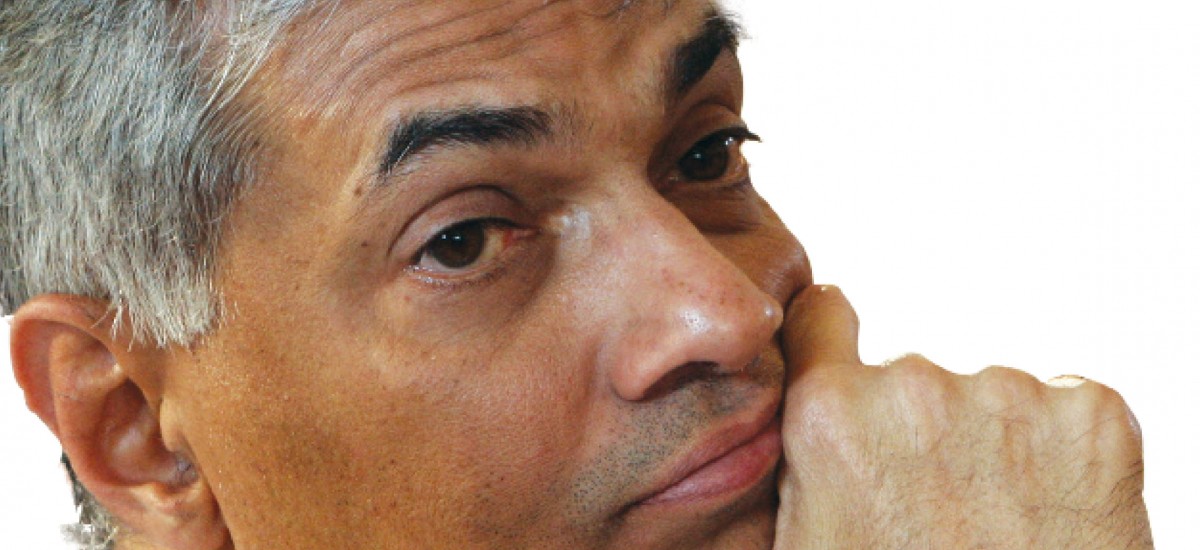Image courtesy the Sunday Leader
The recent elections to three provincial councils, namely the Northern, North Western and Central and the consequent results together with the general political expectations that several more provincial elections would be held next year followed by national, presidential and general elections, make the opposition or non UPFA political landscape a rather important factor in determining the extent of a genuine alternative or real challenge to the current Rajapakse Regime.
A politically resilient and dominant Rajapakse regime
The provincial council results indicate that baring a serious shake up in the opposition political landscape, President Mahinda Rajapakse can fairly comfortably predict a series of wins in the rest of the provincial councils, with the possible exception of the East and romp home to victory in a presidential contest held somewhere in 2014 / 2015. The current political position between the ruling SLFP led UPFA and the UNP in terms of popular support is essentially the UPFA at about sixty (60%) of the popular vote and the UNP at barely thirty (30%) of the popular vote. If political currents continue in the same way, securing a third term sometime in the not too distant future, President Mahinda Rajapakse would become Sri Lanka’s longest serving executive president.
At the heart of the Rajapakse regime’s political resilience, in spite of the regime’s generally unpopular governance from imprisoning the opposition’s presidential candidate, impeaching the chief justice, grabbing further executive power through the 18th amendment, trying to convert the EPF into a pension scheme, raising electricity rates by forty (40%) percent, shooting dead protestors in Weliveriya, creating a dangerous environment for independent media, assaults on minority religious communities, militarizing significant civilian society space, being at loggerheads with the academic community and failing to bring about national reconciliation through adequately implementing the LLRC proposals the Rajapakse regime continues at sixty percent (60%) of popular support, a truly amazing political feat.
One reason for this of course is the ethnic Sinhala nationalism, which is the political ideology of the Rajapakse regime and accordingly there is considerable bi partisan or multi partisan support for the regime based on identity politics. However, the resilience of the UPFA is not solely based on majoritarian ethno religious nationalism, because the most ardent supporters and ideological proponents of such Sinhala Buddhist nationalism, the MEP, the JHU and the NFF actually have in the past and did currently as well, fare poorly at the polls, demonstrating that mercifully, extreme ethno religious nationalism, of an exclusionary and anti minority nature, though influencing government policy and controlling a significant swathe of the State apparatus, is at the political fringes and does not attract significant public support. None of the JHU, NFF or MEP nominees got elected at the recent provincial polls.
The UNP’s leadership issue
A major contributory factor for the Rajapakse regime’s resilience is in fact the absolute lack luster performance of the main opposition United National Party. The UNP does not act like an opposition political force; it tends generally to act much more like a party that is supporting the government but from outside rather than the inside. Like the JVP supported the PA for several years, prior to their formally joining the PA and creating the UPFA. Mr.Ranil Wickramasinghe behaves politically, more like a minister without portfolio, rather than as the leader of the opposition. Convinced that the government would collapse over the weight of its own internal contradictions in due course, which of course has not shown the slightest sign of occurring and mostly insecure in his own position as the “only alternative” to the sole representative of the Sinhala people, the opposition leader seeks and receives favors from the government which allows him to provide limited patronage to a core support base and safe guard crucial interests, which in turn work hard to keep him in the seat of the opposition leadership.
A contrast from history and the TNA
In contrast to this situation, consider how Madam Sirimavo Bandaranaike led the SLFP, subsequent to a crushing defeat from 1977 to 1994, despite the deprivation of her civic rights. She neither sought nor received any quarter from President JR Jayewardene but became a rallying point for the democratic opposition to the then UNP regime and eventually in 1993, was persuaded to permit the formation of the broad opposition coalition of the People’s Alliance, step aside in favor of the next generation represented by her charismatic daughter, resulting in an SLFP victory in 1994 that continues to this day, almost two decades on.
Furthermore in recent times, consider the performance of the Tamil National Alliance, which is the real political opposition to the government. This small, regional ethnic minority party, captures power in a provincial assembly, controls over thirty local government bodies throughout the North and East, pushes the government hard on its human and democratic rights records, seeks to represent and stand up for the minority religious communities both Muslim and Christian, stands up for democratic principles whether in defending Chief Justice Bandaranaike or supporting academic freedom alongside FUTA, while seeking constructive engagement with the UPFA Administration.
Mr.Ranil Wickramasinghe has many lessons he can learn historically from Madam Sirimavo Bandaranaike and currently from Rajavarothiam Sambanthan about being a viable opposition and over time a credible alternative government. But the current approach will over time only solidify what would effectively become a one party state, with the addition of some smaller parties representing specific and limited interests of which the UNP would also be one.

